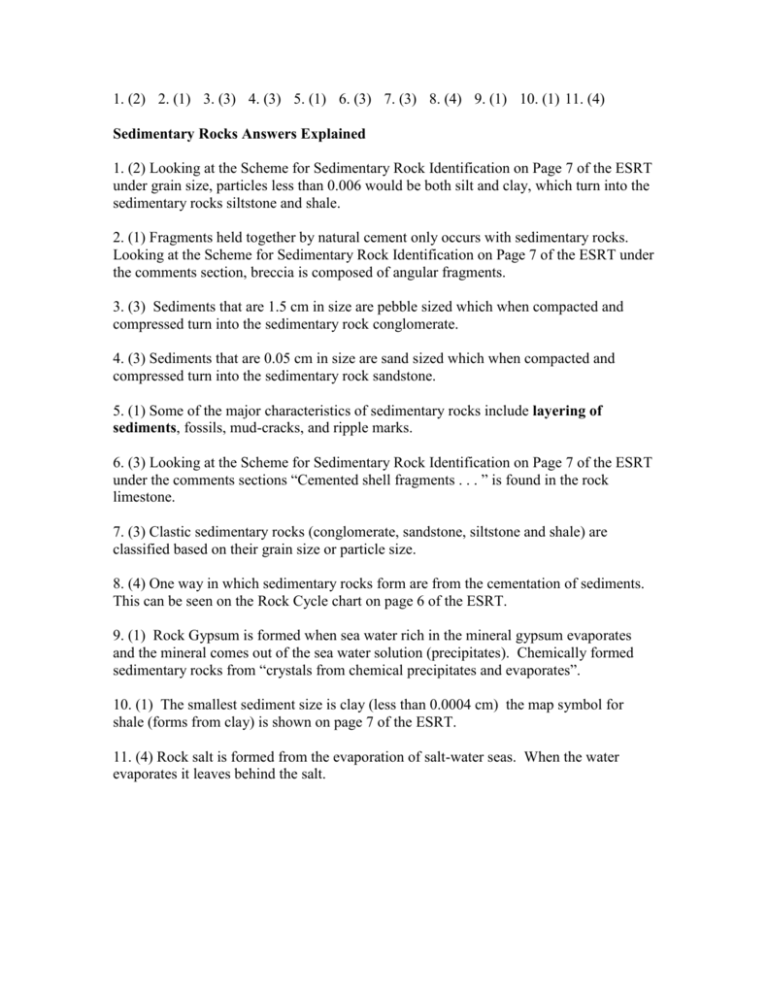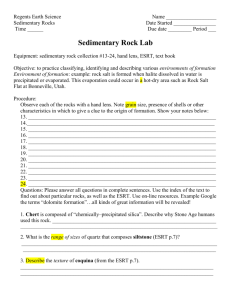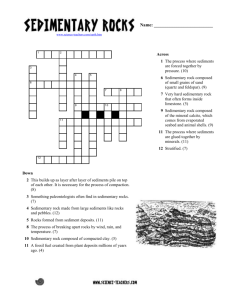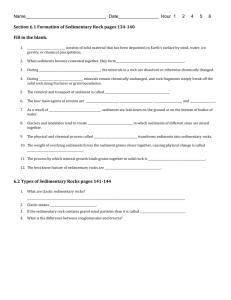shale fragments
advertisement

1. (2) 2. (1) 3. (3) 4. (3) 5. (1) 6. (3) 7. (3) 8. (4) 9. (1) 10. (1) 11. (4) Sedimentary Rocks Answers Explained 1. (2) Looking at the Scheme for Sedimentary Rock Identification on Page 7 of the ESRT under grain size, particles less than 0.006 would be both silt and clay, which turn into the sedimentary rocks siltstone and shale. 2. (1) Fragments held together by natural cement only occurs with sedimentary rocks. Looking at the Scheme for Sedimentary Rock Identification on Page 7 of the ESRT under the comments section, breccia is composed of angular fragments. 3. (3) Sediments that are 1.5 cm in size are pebble sized which when compacted and compressed turn into the sedimentary rock conglomerate. 4. (3) Sediments that are 0.05 cm in size are sand sized which when compacted and compressed turn into the sedimentary rock sandstone. 5. (1) Some of the major characteristics of sedimentary rocks include layering of sediments, fossils, mud-cracks, and ripple marks. 6. (3) Looking at the Scheme for Sedimentary Rock Identification on Page 7 of the ESRT under the comments sections “Cemented shell fragments . . . ” is found in the rock limestone. 7. (3) Clastic sedimentary rocks (conglomerate, sandstone, siltstone and shale) are classified based on their grain size or particle size. 8. (4) One way in which sedimentary rocks form are from the cementation of sediments. This can be seen on the Rock Cycle chart on page 6 of the ESRT. 9. (1) Rock Gypsum is formed when sea water rich in the mineral gypsum evaporates and the mineral comes out of the sea water solution (precipitates). Chemically formed sedimentary rocks from “crystals from chemical precipitates and evaporates”. 10. (1) The smallest sediment size is clay (less than 0.0004 cm) the map symbol for shale (forms from clay) is shown on page 7 of the ESRT. 11. (4) Rock salt is formed from the evaporation of salt-water seas. When the water evaporates it leaves behind the salt.









